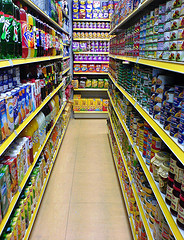Somewhere between $0 and $3.5 million per item. Usually closer to $0.
Surprised? I hear it from people outside the industry all the time — they are convinced that evil manufacturers are paying supermarkets to have their items placed at exactly the right position on shelves.
Don’t get me wrong — there’s some truth to the idea that manufacturers pay supermarkets for placement. Just not how you think.
Let’s say a supermarket currently has pasta shelved together by type of pasta — that is, all spaghetti is together, all ziti is together, and so on. But I want my brand (let’s call it Asta Pasta) to have all of its varieties shelved together. I feel like that might cause consumers to shop within my brand and maybe ignore some of the other brands in the section.
I might even have some data showing that Asta Pasta’s sales go through the roof when this shelving configuration changes. But I’m not going to show that to anyone outside my company.
Instead, I’ll hire an outside consulting firm that will analyze the entire section — Asta Pasta, store brand, and competitors’ brands too. And they’ll create a study that shows how sales for the entire section will improve if brands like Asta are placed together in blocks.
If you can fit this change into a supermarket’s usual shelf reset schedule and it’s not too drastic — and especially if you can show that the category will have amazing sales increases — it might cost a manufacturer absolutely nothing to have this change implemented, aside from the cost of the study (negligible, hopefully) and the cost of a sales call to the supermarket’s headquarters. If it’s something more radical (and gets approved), the manufacturer might be on the hook for the cost of resetting the section — which might run $200 per store or more.
Where money comes into play is when a manufacturer wants to introduce a new item — one that didn’t have a spot on the shelf previously. That’s generally called a slotting fee or slotting allowance. And it can run up to $3.5 million per discrete item (per flavor and size combination — that is, per UPC) to be placed in every U.S. supermarket. We’ll cover that in a coming post.
(Image: Used under a Creative Commons attribution license from Flickr user AndyCunningham)

